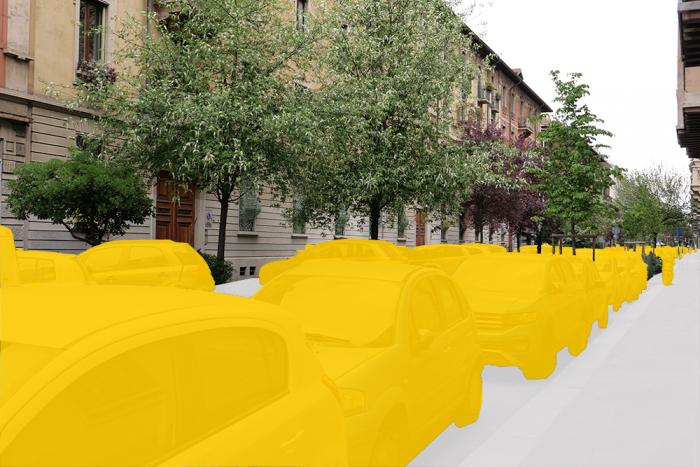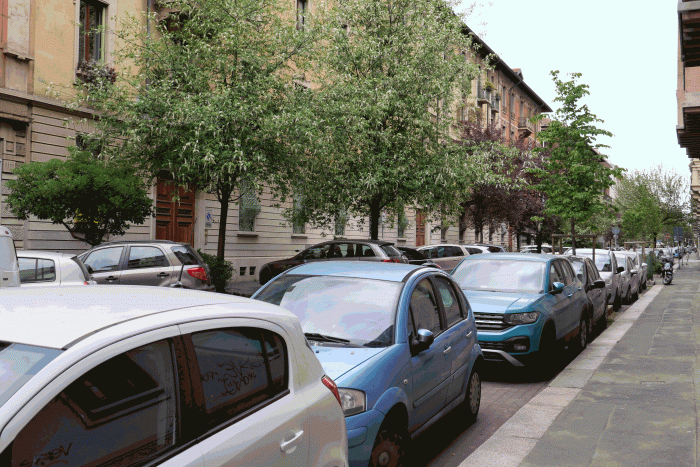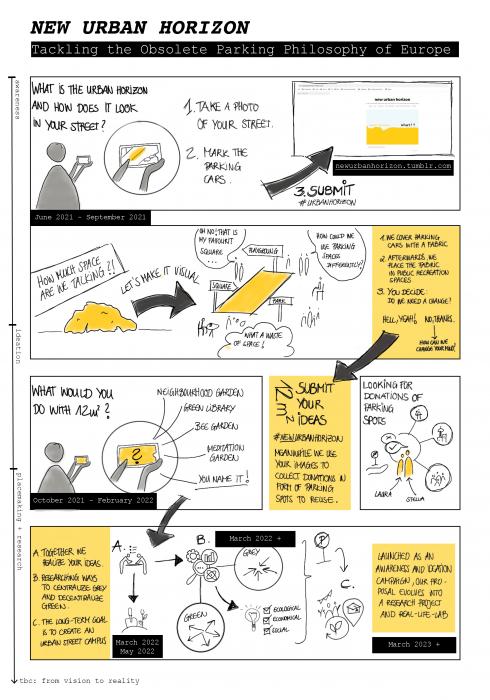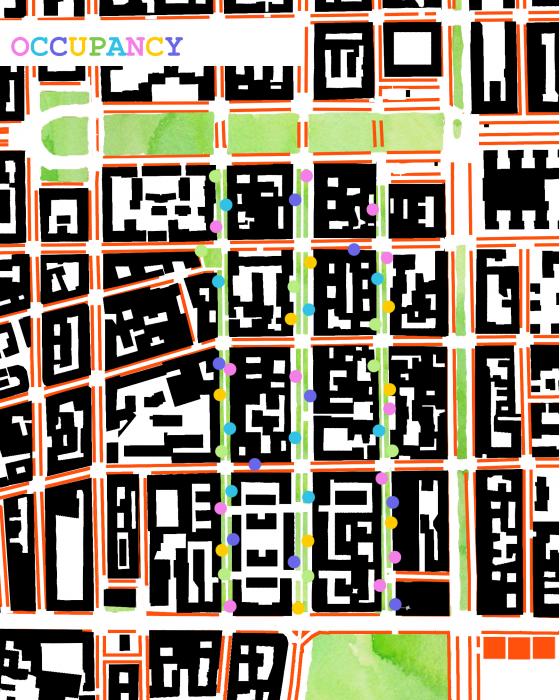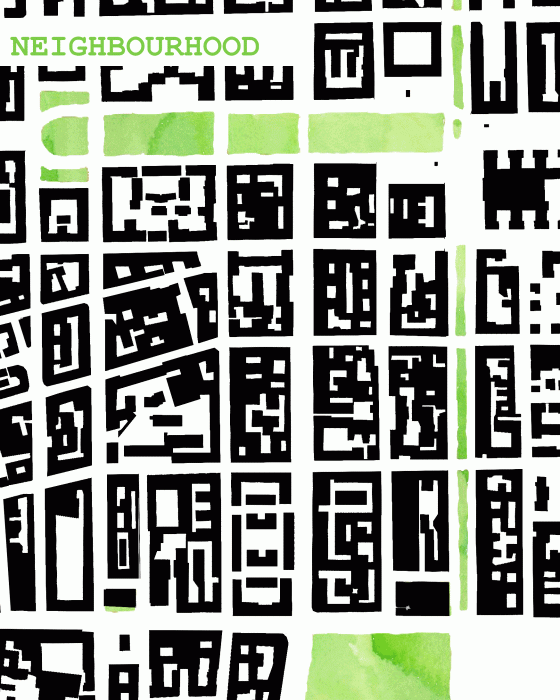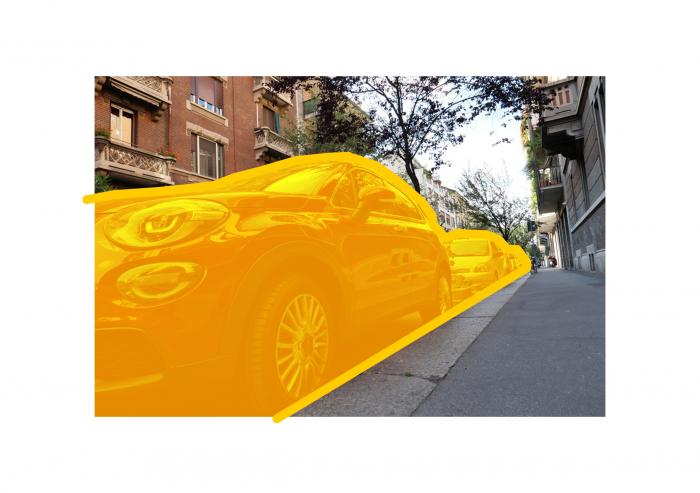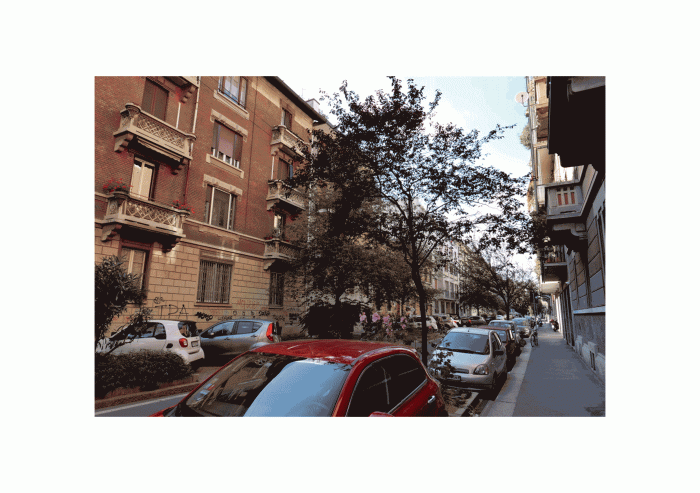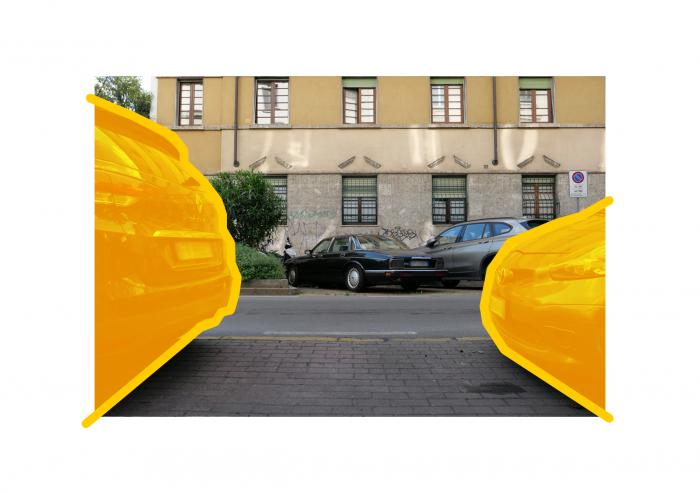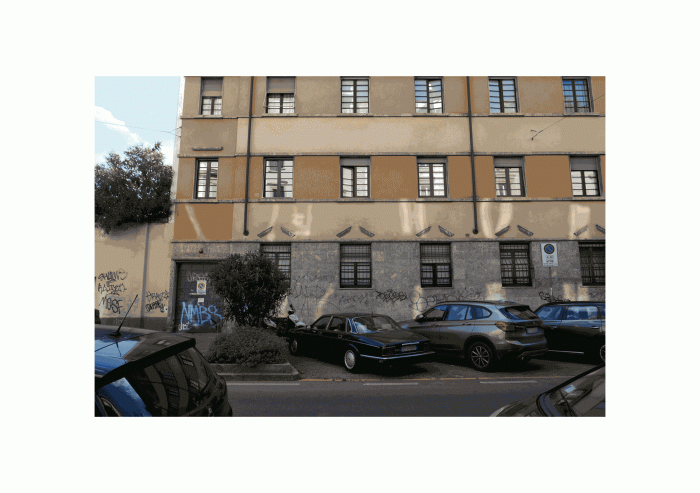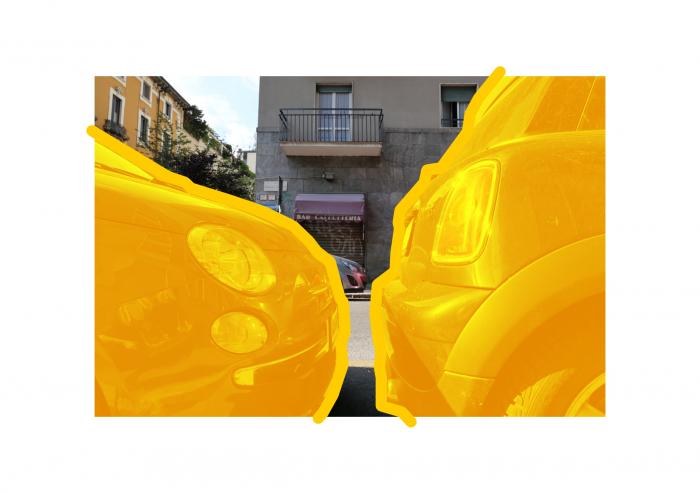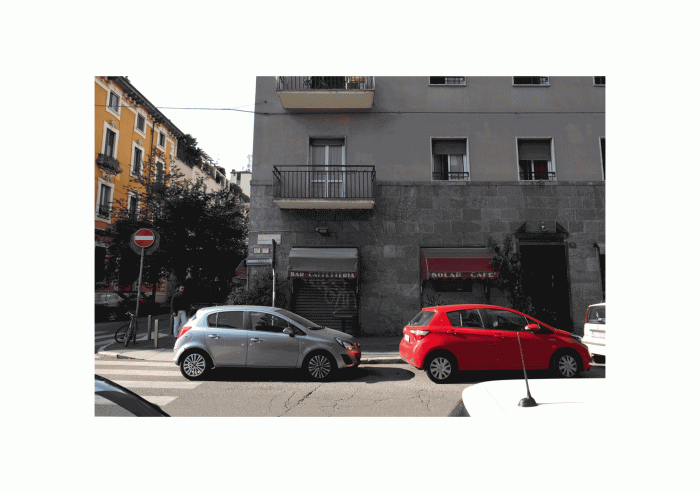I. SUMMARY INFORMATION
Project
269867
Status
Submitted
Award category
Reinvented places to meet and share
You want to submit
NEW EUROPEAN BAUHAUS RISING STARS : concepts or ideas submitted by young talents (aged 30 or less)
Project title
New Urban Horizon
Full concept/idea title
New Urban Horizon - Tackling the Obsolete Parking Philosophy of Europe
Description
The horizon, a perceived line at which the earth's surface and the sky meet, is associated with freedom and imagination. The urban horizon, a city’s silhouette, is outlined by parked cars. Awareness towards the visual and physical pollution of our urban habitats, enables us to collectively discover the opportunities given by a new model of locally centralized parking options: An extensive and climate-effective liberation of public spaces which creates a #newurbanhorizon !
Where is your concept/idea being developed or intended to be implemented in the EU?
Italy
Lombardy
Porta Vittoria
Milan
20129
II. DESCRIPTION OF THE PROJECT
Please provide a summary of your concept/ idea
What is the problem?
The horizon, a perceived line at which the earth's surface and the sky meet, is associated with freedom, longing and imagination. However, the urban horizon, a city’s silhouette, is outlined by parked cars. Ignoring the still present but seemingly overlooked artifacts of a car-centric planning-era, subordinates the urban wanderer to the contradicting epitome of freedom and mobility, which is blocking public spaces for an average duration of 23 hours per day.
What is the vision?
Rededicating space, money and workforce could create a massive change. Current residential parking spaces should be vivid places for learning, encounters and the community as well as making our cities greener, more sustainable and resilient. An acupuncture-like approach visualizes the possible change and can lead to linear continuity that creates safe spaces – envisioned, created and cared for by the community.
How do we get there?
The power of imagination helps us to collectively shape our #newurbanhorizon in four steps, reaching from activation through immediate interventionists formats to implementation by long-term action and research configurations – (1) awareness, (2) ideation, (3) placemaking and (4) solution-based research. The awareness campaign is core of our proposal, as we believe that self-created images can raise much needed consciousness, of people and policy makers alike, towards the necessary change of our streetscapes. Acknowledging the problem enables the ideation and envisioning of alternatives, which can facilitate behavioural change for a sustainable and green future of our cities. Therefore, we need bold and utopic images, produced by all European residents, from young to old, that help us to acknowledge the status quo of our urban horizon; grasp the potential of public spaces marked by road paint; democratize parking spaces and detect inclusive and environmentally-friendly uses that are of similar economical value.
Please give information about the key objectives of your concept/idea in terms of sustainability and how these would be met
Public spaces are democratic!
First and foremost, public spaces should be democratic and inclusive. Creating awareness and starting an ideation process can set the framework for a long-lasting paradigm-change – redefining what we, as inhabitants, expect from public spaces, how they can enrich our social life and the urban community. Once the domino-effect has been started, an active placemaking process, anchored in a solution-based research, helps to sustainably shape our cities of tomorrow in an economical, ecological and social iterative triad.
Revitalise the veins of our cities!
First we have to tackle the parking stress and thereto related traffic as well as the urban heat-island effect and impermeable ground. Linearly upgrading the urban fabric can contribute to a decentralized eco-resilience in its twofold meaning – economy and ecology. We imagine a making-it-green sponsorship of parking-lots for residents. By doing so, we can test models of stewardship for public green spaces; and hence, implementation and financing strategies. Moreover, the heat-island effect in cities can be tackled with interventions on the street level, as it stems from the high amount of sealed ground, primarily derived from streets and parking. Introducing plants and shading on the parking strips, while maintaining the circulation on the street, would support the climate-balancing effect of parks and introduce it to the streets, the veins of the city. Urban biodiversity corridors would gain continuity and establish a new type of urban green space. The liberation from the visual and physical barrier introduces a new level of safety and accessibility to the city. The decentralization of urban green, from the big Volksparks into the neighbourhoods, encourages their social structure and fights urban loneliness and the anonymity of the city – making not only our cities more resilient but also our communities.
Please give information about the key objectives of your concept/idea in terms of aesthetics and quality of experience beyond functionality and how these would be met
Acknowledging the importance of aesthetics!
We want to radically change our streetscapes in order to value environmental and every-day life aspects of aesthetics. The little moments make our living worthwhile and imprint our bodily-routines, which constitute the identification with certain places according to Anne Buttimer and David Seamon. To achieve the perception of the possible urban aesthetics, we first have to attain a common understanding of the insufficient and monotonous experience of the urban horizon.
Challenging our perspective!
It is a matter of perspective and we have to recall this every day: Teenagers, young grown-ups and adults may be physically able to overlook the disturbing but ‘common’ layer of the urban horizon; children and people with a limited range of perception are not. Imagine the behavioural change that could be facilitated, if new generations were to grow up without car-framed residential streets, seeing plenty of space to co-create the city with their purely creative and utopian ideas. Imagine the positive effects for all of us, if we would reevaluate and rededicate parking spaces; and hence, change the aesthetics and experiences. It would benefit our moods as well as our beliefs by creating more space – physically and mentally. Reducing the risks of accidents and the level of pollution, both physical and visual, increases well- being and health. The inclusive and collective transformation of parking spaces empowers people to realize their own version of aesthetics and beauty. Diversifying parking spaces enforces creativity and the adequacy of common space, which again creates a new sense of ownership for and identification with those spaces. As John Berger said very wisely: “Seeing comes before words. The child looks and recognizes before it can speak. But there is also another sense in which seeing comes before words. It is seeing which establishes our place in the surrounding world.”
Please give information about the key objectives of your concept/idea in terms of inclusion and how these would be been met
Act politically!
Tied to Hannah Arendt's claim, that human-kind has lost its ability to politically act for the common good rather than self-interest, we understand inclusion as a trifold – the diversification of space, the collective reimagination and the maintenance of public spaces. It requires societal commitment by the community, understanding (a) the extent of visual and physical pollution created by car-parking traffic; (b) the democracy of public space; (c) the meaning and purpose of the aspired change; (d) its health benefits and improvement for the quality of life. The justified claims of the Fridays for Future movement show that young generations are up for the task and ready to become players of urban development. Hence, we propose an inclusive format giving everyone the chance to be politically active and outstanding by taking up authorship in designing and maintaining public spaces.
Starting a chain reaction!
What if new generations grow up with a different understanding of what parking spaces are? Seeing the world with their eyes, instead of accepting the obsolete version of the cityscape that we think is normal, might be our chance for actual change. Therefore, we want to open the New European Bauhaus initiative to those that so far have not been reached to redesign the future: the children. We want to include schools and kindergartens in this process, by offering new modes of collaborative and participatory learning. We propose a real-life-laboratory in existing residential parking spaces by transforming the linear spaces and rethinking the public street as a green campus for lifelong learning, inclusion and sustainability. This makes our cities and communities more resilient; fights urban loneliness; creates a platform for Europe-wide collective solution finding and imagination; and strengthens a common European identity.
Please explain the innovative character of your concept/ idea
Creating a common understanding!
Many initiatives to transform urban streetscapes already exist. Unfortunately, the solutions have been neither satisfactory, nor pervasive regarding their environmental impact and acceptance of the broad society. We came to the conclusion that we cannot change our streetscapes without changing our vision of urban mobility. With the awareness campaign we aim to reach as many European residents as possible and to build a common understanding for the current situation.
Not the car-free city but the parking-free street!
Gladly, extensive public parks and gardens are valued as ‘green lungs’ and ‘oases’ within cities – providing recreational space for the interaction of the public, may it be leisure, sports or contemplation. However, their ecological scope is limited and we have to introduce new types of urban green space, as we cannot turn the European metropolis into a 19th century garden city. To address this problem, we have to rethink mobility models and their infrastructures. The motto could not be simpler: Revitalising the veins of our cities by the decentralization of green urban space and the local centralization of parking options. We propose to maintain circulation within residential areas, providing drop-off spots and disabled parking, but to radically rearrange the parking supply. How this could be realized and look like, shall be investigated in a subsequent solution-based research by looking at different cases within Europe. Launched as an awareness and ideation campaign through the New European Bauhaus initiative, our proposal evolves into a research project and real-life-laboratory.
It is a matter of awareness and education!
Constant learning is the key for enduring evolution. Hence, the long-term goal is to create a green street campus to develop and implement education models and methods that offer sustainability, inclusion and aesthetics, providing a learning process for children and professionals alike.
Please detail the plans you have for the further development, promotion and/or implementation of your concept/idea, with a particular attention to the initiatives to be taken before May 2022
Our proposal consists of two phases – activation and implementation. We set the focus on the first phase to be carried out until May 2022, initiating a feedback loop for the conversation between European residents, municipalities and policy makers.
Awareness: How does your urban horizon look like?
Jun - Sep 21 Residents are asked to take a photo of their street, mark the space that is occupied by parked cars and submit their image on our website, screening the European urban horizon within an interactive collage using #urbanhorizon. Making the obvious visible, we want to cover parked cars with coloured fabrics and relocate them on squares and playgrounds, expressing how much space is currently occupied by cars.
Ideation: What would you do with 12sqm in front of your flat?
Oct 21 - Feb 22 In an idea contest the residents can submit their proposals for what they would do with 12sqm – the size of a standard parking lot. With those images we want to contact relevant cities, asking for donations of parking stripes for our interventions.
Mar - May 22 Where possible, we would develop the ideas in accordance with the neighbours and the municipality, integrating our experience as Landscape Architects, culminating in the collective realization on site.
Solution-based research backes up transformation!
In this process we understand our role as facilitators of change, developing case studies and detecting compensation areas. Understanding our profession of Landscape Architecture not as the greening assistance, but as individual and generalist discipline that brings together many complementing professional fields. Believing that we should take the ‘masters’ out of master planning and should be working with a collective of space and place planning disciplines instead, enabling inhabitants in co- developing public spaces, we offer an inclusive co-creation process to shape a #newurbanhorizon by transforming parking spaces into linear but diverse green open spaces.
III. UPLOAD PICTURES
IV. VALIDATION
By ticking this box, you declare that all the information provided in this form is factually correct, that the proposed concept/idea has not been proposed for the New European Bauhaus Rising Stars Awards more than once in the same category.
Yes
